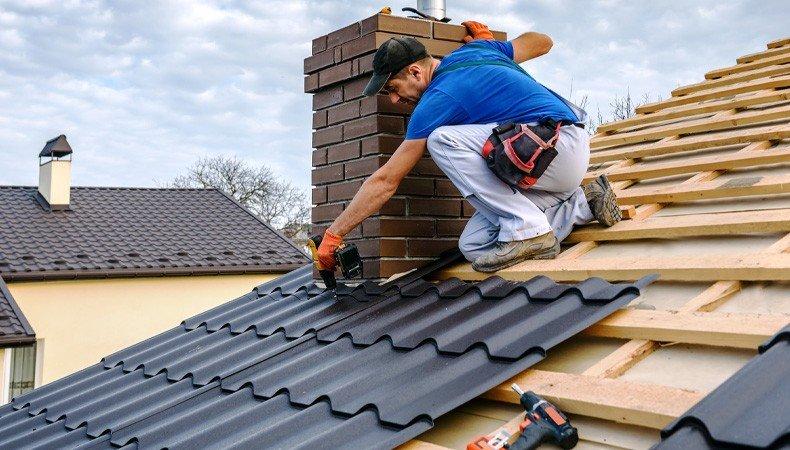If you’re a homeowner or considering purchasing a property, understanding the age and condition of the roof is crucial. The roof is one of the most critical components of a house, protecting everything beneath it. Knowing when the roof was last replaced can help you anticipate future repairs or replacements and budget accordingly. This article will guide you through various methods on how to check when the roof was replaced, ensuring you have all the necessary information for proper maintenance and peace of mind.

Why Knowing Your Roof’s Age Matters
Understanding the age of your roof is vital for several reasons:
- Maintenance Planning: Knowing the roof’s age helps you plan for regular maintenance and anticipate future repairs.
- Insurance Purposes: Insurance companies often ask about the roof’s age to determine coverage and premiums.
- Resale Value: A new or well-maintained roof can increase your property’s resale value.
- Safety: Ensuring your roof is in good condition protects your home and family from potential hazards like leaks or structural damage.
How to Check When Roof Was Replaced: Methods and Tips
1. Check Home Improvement Records
Start by checking any records or documents you have related to home improvements. This can include receipts, warranties, and invoices from contractors. These documents often provide the exact date of roof installation or replacement.
2. Consult with Previous Owners
If you recently purchased the property, contact the previous owners. They might have detailed information about the roof replacement, including the date and the contractor used. This is especially useful for older homes where records might not be easily accessible.
3. Contact the Contractor
If you know which contractor worked on the roof, reaching out to them can provide precise information. Contractors often keep detailed records of their projects, including dates and materials used.
4. Inspect the Roof
Physically inspecting the roof can also give you clues about its age. Look for signs of wear and tear, such as:
- Shingle Condition: Curling, cracking, or missing shingles indicate an older roof.
- Granule Loss: Excessive granule loss on asphalt shingles suggests aging.
- Sagging Areas: Sagging or uneven areas can signal structural issues often associated with older roofs.
5. Use Building Permits
Check with your local building department for permits related to roofing work on your property. Roof replacements typically require permits, which are public records. These permits will have the date of issuance, giving you a timeline for the roof replacement.
6. Review Home Inspection Reports
Home inspection reports, especially those from the time of purchase, can provide valuable information about the roof’s age and condition. Inspectors often note the estimated age of the roof and any immediate concerns.
7. Check with Homeowner’s Association (HOA)
If your home is part of a homeowner’s association, they might have records of major repairs and replacements, including roofing work. Contact your HOA to see if they can provide any information.
8. Look for Manufacturer Labels
Sometimes, roofing materials have manufacturer labels or stamps indicating the production date. While this date might not tell you when the roof was installed, it can give you an idea of its age if the materials are original to the roof.
9. Digital and Online Tools
Several online tools and resources can help you estimate your roof’s age. Aerial imagery services, such as Google Earth, can sometimes show changes to the roof over time. Additionally, certain home improvement websites offer tools for estimating roof age based on visible wear and material type.
Signs That Your Roof Needs Replacement
Even if you determine that your roof is relatively new, it’s important to know the signs that it might need replacement soon:
- Leaks: Persistent leaks are a clear sign of roof damage.
- Damaged Flashing: Flashing around chimneys, vents, and other roof penetrations should be intact and secure.
- Moss or Algae Growth: Excessive growth can indicate moisture problems and potential damage.
- Daylight Through Roof Boards: If you can see daylight through the roof boards in your attic, it’s time for a replacement.
Maintenance Tips for Prolonging Roof Life
Proper maintenance can significantly extend the lifespan of your roof. Here are some tips:
- Regular Inspections: Conduct regular inspections, especially after severe weather.
- Clean Gutters: Keep gutters clean to prevent water backup and damage.
- Trim Trees: Overhanging branches can damage the roof and introduce pests.
- Remove Debris: Remove leaves, branches, and other debris that can trap moisture.
Read too: Decoding Timelines: How Long Does It Take To Replace A Roof and What to Expect
Conclusion
Knowing how to check when the roof was replaced is essential for every homeowner. By using the methods outlined in this article, you can gather accurate information about your roof’s age and condition. This knowledge not only helps you plan for future maintenance and potential replacements but also ensures the safety and value of your home. Regular inspections and proper maintenance are key to extending the life of your roof and protecting your investment.



Leave a Reply